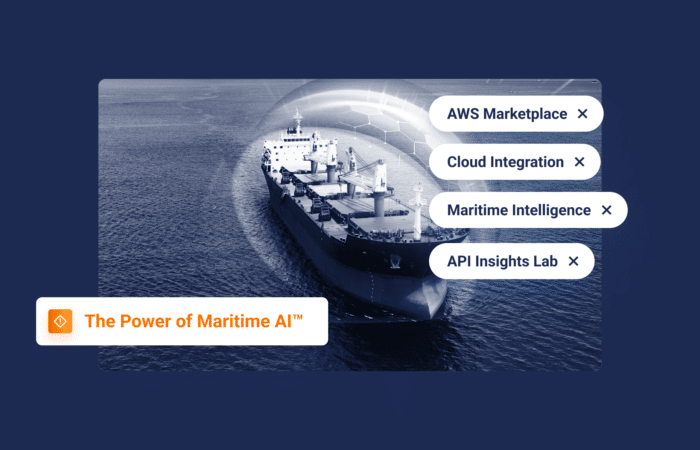What’s inside?
It is important to standardize the captain’s next destination report, despite the fact that you cannot always rely on reliable or consistent captains. This blog post will explain why AI/deep learning systems depend upon standardized entries and why differentiating between port waiting areas and actual port calls is critical for accurate ETA predictions.
Automatic identification systems (AIS) are derived from different data points that vessels transmit. The AIS transmits the vessel’s current location, draft, voyage number, etc. When the captains declare the next destination, they write a next destination report – 20 characters of free text. This often causes confusion, since there are multiple ways of writing the names of ports and terminals, each captain can write it however s/he wants, which may be difficult to understand.
According to the UN Economic Commission for Europe: “The names of such locations are often spelled in different ways and sometimes the same location is given different names in different languages (e.g. LIVORNO – LIBOURNE – LEGHORN; LONDON – LONDRES – LONDRA; WARZSAW – VARSOVIE – WARSZAWA – WARSCHAU), which creates confusion and difficulties in data interchange…”
Another example, based on Windward’s data collected over the past 12 years is Tanjong Panjur, the main terminal in Singapore, which be spelled or written multiple ways:
SINGAPORE
SGSIN
PEBGA
SINGAPORE PWBGA
SIN_PEBGA
To help address these difficulties, the United Nations (UN) created the United Nations Code for Trade and Transport Locations (LOCODE). The first two letters of the LOCODE are the country code, the last three letters are the location. For example, USLAX is the Los Angeles port in the United States. Each container-related port has to have a LOCODE. Normalizing port names by using the LOCODE creates one truth, which makes it easier to standardize and avoid confusion. It also allows deep learning models to learn communication patterns, further emphasizing the importance of accurate data.
An Additional Next Destination Wrinkle & AI’s Critical Role
When the captain writes a next destination report, it doesn’t necessarily mean that the vessel is going to enter the port. For instance, the captain might send a next destination report announcing Felixstowe, with the intent to anchor in the port’s waiting area, as opposed to entering the port area itself, let alone berthing there. In some instances, captains may go the extra mile and specify in the report that they are referring to the waiting area, but that usually does not happen.
The differentiation between a vessel announcing it is entering the port berthing area vs. another loitering in the waiting area is especially important when a deep learning model is computing ETAs. For over a year, the port of Los Angeles has been one of the most congested ports in the world, with many vessels forced to wait outside for weeks. The inability to differentiate between port calls and port waiting area anchorage would completely distort the results of a deep learning model trying to understand the patterns of behavior at that port. Differentiating between the port waiting area and port calls is also necessary for ensuring fewer false positives.
Achieving captain’s next destination report accuracy requires domain expertise and an understanding of the maritime industry. Deep learning models aren’t enough on their own, because without context and understanding of the maritime ecosystem, the deep learning model can’t derive accurate insights from the maritime data. Windward’s 12+ years of domain expertise and experience, combined with our cutting edge AI technology, provides customers with the most accurate real-time visibility.





